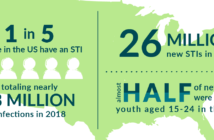Genetically engineering embryos used to be science fiction, but with new technology, it has become a growing reality for future parents.
For those who wonder if this is ethical, Julian Savulescu from Oxford University proposes to look at the thought of helping your child’s health. According to Science News, online blog, Savulescu compares it to being the same as getting vaccinations or giving a child medicine.
Savulescu argues that parents must keep their children healthy. He mentions if there is a way to keep them from getting diseases or cancer, then they should take the steps to ensure they don’t.
In a 2016 poll done by STAT-Harvard, the majority of voters said they would not modify their baby’s genes for any reason. 65 percent of voters said no to changing genes to reduce risks of diseases, and 83 percent said no to improve intelligence and or alter physical features through gene modification.
Haylee Ritz, a sophomore biology major, mentions what she knows about gene modification.
“The chromosome 21. if you have an extra copy; it leads to down syndrome. If you were to modify it to two chromosomes, so an extra one wouldn’t appear, it could prevent down syndrome,” said Ritz.
However, Science News adds that the technology is not quite advanced enough to prevent such illnesses, so it is not advised to take such drastic measures yet.
Ritz also agrees that the process would be hard if the fertilization weren’t in vitro (fertilized outside of the womb).
“When you already have the egg and sperm already implanted, then it’s really hard to change that [genes]. Because the baby is already there and has its DNA, and it already has all of its compositions. I believe it’s within the first 24 hours that all the gene transfers have already happened,” said Ritz.
Currently, the only technology to edit any feature of a baby includes choosing gender and eye color, according to Popular Mechanics, the online magazine. This process is called preimplantation genetic diagnosis, PGD.
The online magazine goes into depth about the process of PGD; there are about 12 eggs taken from the mother, which are then fertilized with the sperm by in vitro fertilization
During the editing process, an organism is injected by a protein that then cuts out some of the genomes, and replaces it with the desired genes.
According to Popular Mechanics, researchers in Brazil have conducted genetic modification on a specific species of mosquitos. The type of mosquitos they chose carry an illness called dengue fever. They were injected with a protein that will cause them to die before they become full adults. They have released millions of these injected mosquitos into the wild, attempting to wipe out the ill species.
Recently, there has been a breakthrough with CRISPR, a powerful gene-editing tool, according to The Verge. In July of 2017, scientists successfully edited the DNA of human embryos in the United States.
The online magazine states that this breakthrough is the first step to the future of editing baby’s genes to prevent disorders or diseases.
MIT Technology Review, online technology-review magazine, states the first attempt to genetically modify a human embryo in the United States was done by a team of researchers located in Portland, Oregon. Shoukhrat Mitalipov, from Oregon and Science University, led the experiment. The process involved, “changing the DNA of a large number of one-cell embryos with the gene-editing technique CRISPR,” adds MIT Technology Review.
Before this event, three other attempts were made by scientists in China. However, Mitalipov has helped pave the way for this practice by showing that the process is possible to safely and efficiently do. He demonstrated during his attempts that he could correct genes that cause inherited diseases.
The process of correcting inherited diseases is “germline engineering.” This method is called germline engineering because the modified child’s genes would pass to their future children, through their germ cells [egg and sperm].
Although the embryos were discarded, and the scientists never intended to inject them into a womb, they are a huge breakthrough for the future of modified human genes.
Still, there are people skeptical about the thought of modifying one’s genes, including Ritz.
“I don’t think it’s [modifying genes]a good idea because what are the potential of having negative side effects? They are actually doing genetic modification using corn and soybeans and cotton, and they’re seeing that when they do the modification, it is killing all of the bugs that are supposed to be there, its eliminating biodiversity,” said Ritz. “And when that happens it is
creating stuff like superweeds or have bugs that aren’t supposed to be there, and there’s no way to kill them. So, its negatively impacting the environment.”
Ritz also goes on to add that the negative effects are hard to get rid of because they are mutations from the modifications. She mentions the modifications are bad for the environment, and poses the impactful statement about gene modification on humans; “So, if we do that with our own children, they could have the same negative side effects too.”
The future of genetic modification is still uncertain, but being explored. Even though the majority of people currently view genetic modification as a negative thing, there are scientists wanting to prove them wrong. Currently, there are tests being done to further the advancements of genetic modification so it can someday be a reality for those who are for the medical changes.





